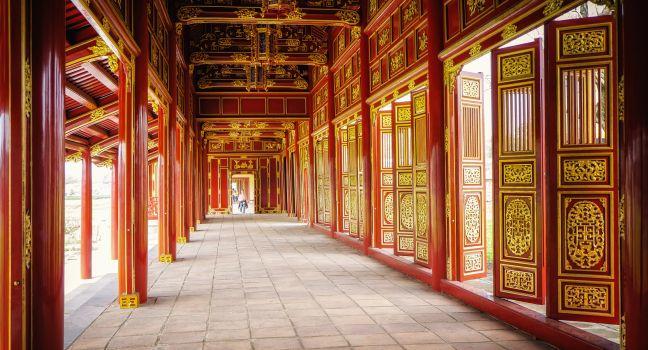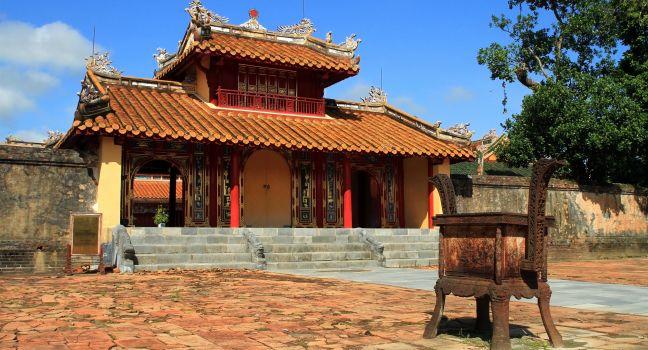The Citadel

If there is only one sight you visit in Hue, make sure this is it. Constructed in 1805 under the rule of Emperor Gia Long, this fortress is sheltered by an outer wall spanning 10 km (6 miles). Marking its entry are the Nine Holy Cannons and a flag that stands 121 feet high, the tallest in the country. Inside the sprawling complex are temples, ruins, shops, and galleries paying tribute to the past. Something of an eyesore are the scaffoldings of sections still being restored from the severe damage caused during the 1947 and 1968 battles. Just beyond the main gate is the Supreme Harmony House, where the emperor addressed officials. Approximately 90% of this main building is still original, including the two unicorns at the base of the throne, symbolizing loyalty. In the Resting House to the left of the courtyard, bullet holes on the front steps leave traces of a battle during the American (Vietnam) War.




